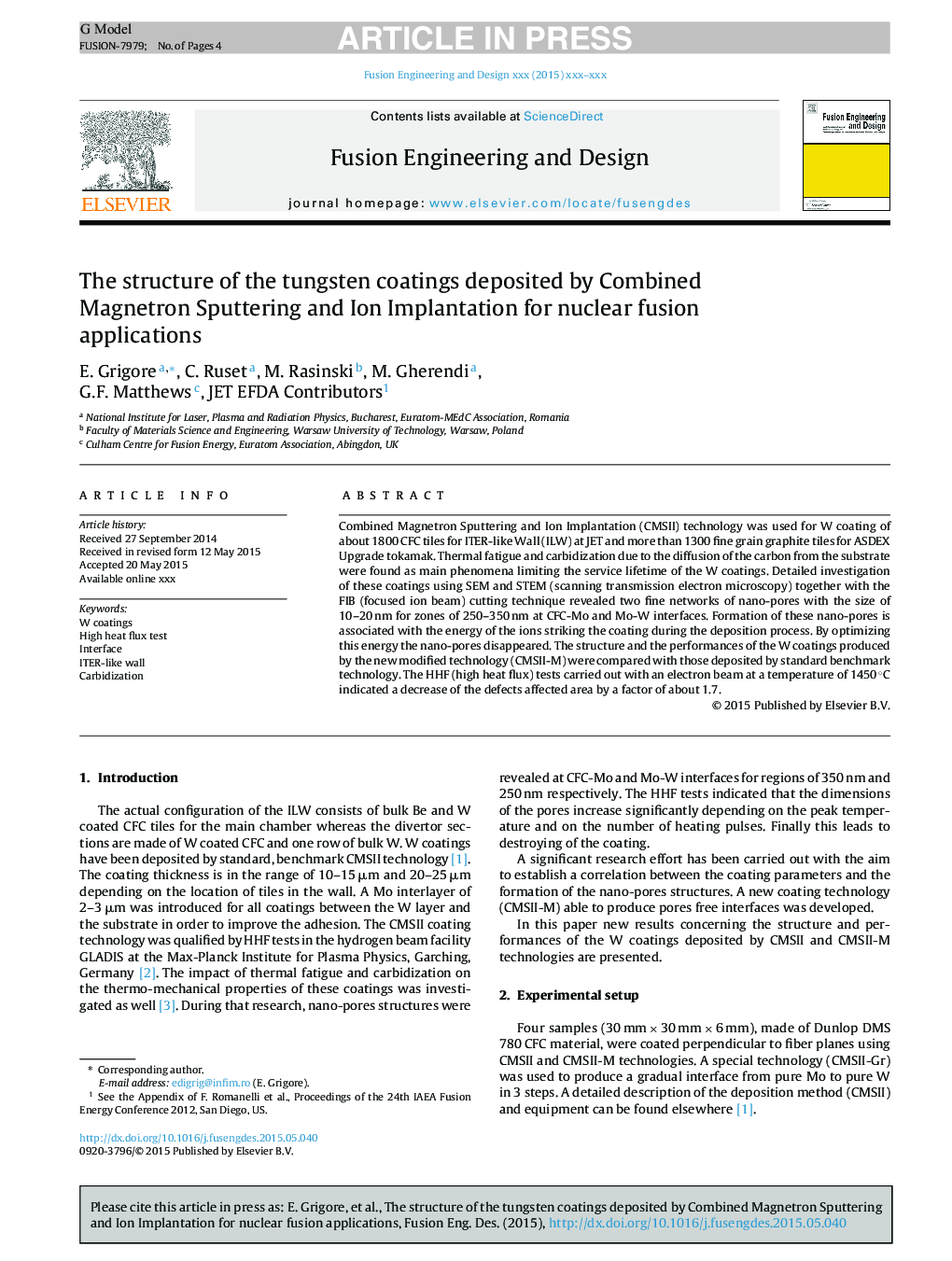| Article ID | Journal | Published Year | Pages | File Type |
|---|---|---|---|---|
| 6745946 | Fusion Engineering and Design | 2015 | 4 Pages |
Abstract
Combined Magnetron Sputtering and Ion Implantation (CMSII) technology was used for W coating of about 1800 CFC tiles for ITER-like Wall (ILW) at JET and more than 1300 fine grain graphite tiles for ASDEX Upgrade tokamak. Thermal fatigue and carbidization due to the diffusion of the carbon from the substrate were found as main phenomena limiting the service lifetime of the W coatings. Detailed investigation of these coatings using SEM and STEM (scanning transmission electron microscopy) together with the FIB (focused ion beam) cutting technique revealed two fine networks of nano-pores with the size of 10-20 nm for zones of 250-350 nm at CFC-Mo and Mo-W interfaces. Formation of these nano-pores is associated with the energy of the ions striking the coating during the deposition process. By optimizing this energy the nano-pores disappeared. The structure and the performances of the W coatings produced by the new modified technology (CMSII-M) were compared with those deposited by standard benchmark technology. The HHF (high heat flux) tests carried out with an electron beam at a temperature of 1450 °C indicated a decrease of the defects affected area by a factor of about 1.7.
Related Topics
Physical Sciences and Engineering
Energy
Energy Engineering and Power Technology
Authors
E. Grigore, C. Ruset, M. Rasinski, M. Gherendi, G.F. Matthews, JET EFDA Contributors JET EFDA Contributors,
